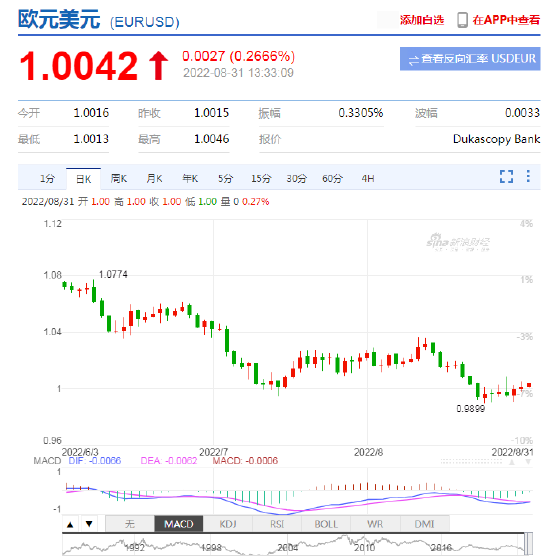At present, with the continuous interest rate hike cycle in most developed countries, the rhetoric of inflation cooling and economic recession continues to ferment, and the most core of this lies in the comparison between the two major economies of the United States and Europe. Affected by fluctuations in energy prices, the United States7Monthly inflation has shown a slowing trend, while the Eurozone is not as optimistic as the United States. Excessive inflation and economic stagnation in many countries within the economy have released potential risks in Europe or may continue to ferment in the future.  Firstly, the passive interest rate hikes under high inflation continue to ferment. Under the influence of the energy crisis, the inflation pressure in the euro area continues to rise, and the inflation situation is far more severe than that in the United States. Inflation exhibits a shift from producer inflation to consumer inflation, and rising production costs have forced some companies to stop production, further exacerbating the imbalance between production and consumption supply and demand, leading to a vicious cycle of inflation. Under the deadlock of the Russia-Ukraine conflict, it is difficult for other countries to make up the energy supply gap in the euro area. Moreover, compared to the start of the US interest rate hike cycle and the start of European interest rate hikes, the prominent passivity of interest rate hikes in the eurozone is even more difficult to solve. Secondly, the slowdown in production has led to an economic downturn. eurozone8Monthly manufacturing industryPMIlower49.7Among them, the manufacturing industry in major countries such as Germany and FrancePMIBoth have fallen below the boom and bust line, highlighting the significant weakness of the continued decline in manufacturing demand in the eurozone. In addition, the producer price index has increased significantly, especially in Germany8Monthly year-on-year growth37.2%。 Although producer prices often have higher volatility compared to consumer prices, for the eurozone, especially Germany, the persistent fermentation of inflation that is difficult to cool down will also be a potential risk of economic weakness. Finally, it is difficult to properly solve the energy problem in Europe in a short period of time. The main reason for the difference in inflation between the United States and Europe is due to concerns about energy prices. Although natural gas prices in the United States are also rising, in absolute terms, their increase is relatively lower than in Europe. The reason for this situation is that for Europe, Russia is the main supplier of natural gas, and since the beginning of the Ukrainian war, natural gas supply has continued to decrease. In contrast, the United States, as a major natural gas producer, has certain advantages compared to Europe. For Europe, which is highly dependent on imported energy, short-term supply pressure is a key risk that cannot be compensated for or the overall economy further deteriorates. Therefore, from the current rapidly soaring inflation, it is predicted that the prospects for the European economy in the short to medium term are relatively bleak. Although there is still a possibility of sustained inflation in the United States in the future, compared to Europe, due to fluctuations in natural gas and energy prices, sustained inflation may be a high probability event, and the probability of a recession in the eurozone economy in the future will also increase significantly, and the severity of the recession may be more difficult to improve. In summary, the adverse effects of the eurozone economy, foreign trade, and finance will continue to disrupt the process of European economic recovery, while concerns stemming from energy issues may exacerbate or disrupt Europe and put it in an unavoidable predicament. As a result, market confidence in Europe will also significantly decrease, and the export pressure caused by currency depreciation may continue to exacerbate economic concerns. In the future, as the Federal Reserve improves its control over inflation or suspends or slows down the process of interest rate hikes, benchmarking the euro price with fluctuations in the US dollar exchange rate may worsen the outlook for the eurozone and continue to pose risks. |